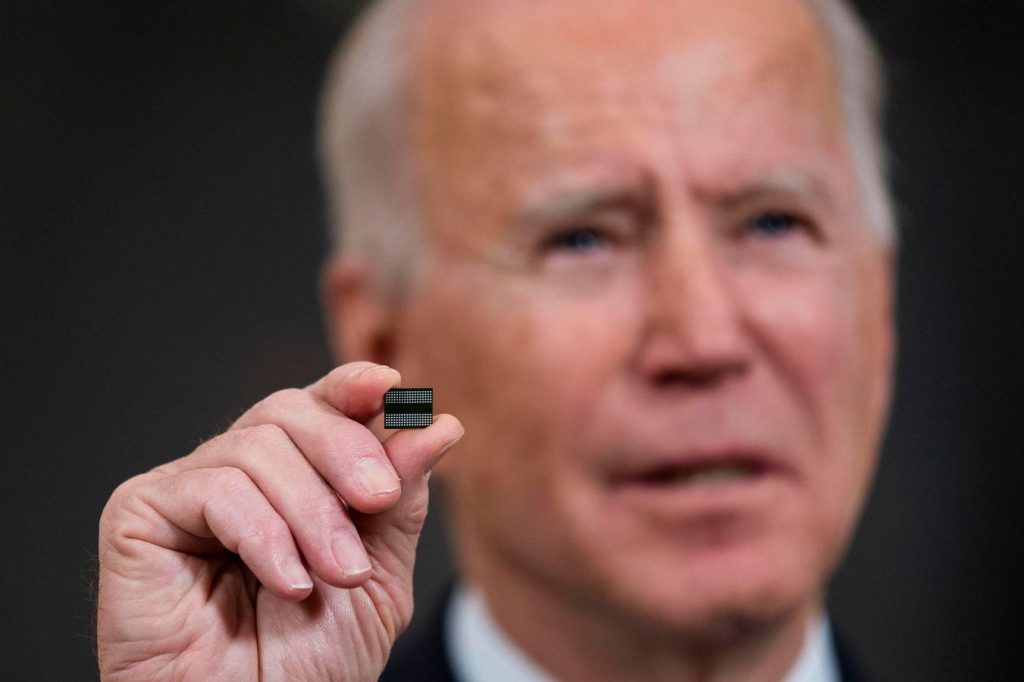Since the Biden administration published its finalized semiconductor export controls in October, there has been little movement from the White House to impose restrictions on other advanced technologies. Part of the reason is that there is no clear next choice for the Biden administration to put into the crosshairs next. Still, the derisking campaign that the White House has pursued is expected to continue, and the lack of an obvious pick has led to speculation and lobbying over what could be next.
Under different circumstances, it would not be unusual to think that after the semiconductor export controls, President Joe Biden paused other efforts until after the election with such an achievement on his resume. However, given the current domestic political climate where being perceived as “tough on China” is necessary, such a pause could be disastrous for Biden’s re-election bid.
The spotlight on what the White House will do is arguably even greater after Biden’s meeting with Chinese President Xi Jinping, as some Republican lawmakers, such as Rep. Mike Gallagher (R-Wisc.), have accused the Biden administration of becoming softer during the recent diplomatic revival. Thus, continuing these actions, driven by the “small yard, high fence” derisking philosophy, is necessary to maintain Biden’s credentials. The president is not an unwilling participant in finding these next steps. However, the domestic political pressures are likely forcing him to operate faster and more aggressively than he otherwise would have.
One initiative the Biden administration may try to promote is the outbound investment executive order signed in August by Biden. The Treasury Department has yet to release its initial proposal for the rules and likely will not do so until next year, meaning completion of the regulations stretches past the election. While this does address the perceived issue of China’s ability to develop advanced technology, it is not an exact substitute for export controls and is doubtful to be sufficient to quiet China hawks in Congress. The outbound investment rules could even frustrate some lawmakers if they feel the rules do not go far enough, making the other actions even more important.
Given how much the White House has invested into promoting and protecting the semiconductor industry, the next steps may continue that effort given the technology’s importance as a “force multiplier,” according to National Security Advisor Jake Sullivan. A part of the industry that could come under more scrutiny is the chip-packaging sector. The Biden administration is trying to improve the United States’ competitiveness through a recently announced $3 billion research and development program. Still, there is a significant gap between the U.S. and China.
Shipping these advanced semiconductors, which the White House is trying to protect, overseas for packaging “creates supply chain and national security risks [the U.S.] cannot accept,” said National Institute of Standards and Technology Director Laurie Locascio. Details about what restrictions may be imposed have yet to emerge as any discussions appear to still be in the early stages. However, what seems to be the most probable route for the Biden administration would be to impose limits on what chips can be shipped to China for packaging purposes.
If the White House were looking to move beyond semiconductors, there would be no shortage of possible technologies. One that has received increasing attention is lidar, which are sensors that rely on lasers to give advanced vehicles and weapons a three-dimensional view of the world. There has been growing lobbying for Biden administration action and calls from lawmakers for action. However, to date, Biden has shown little reciprocal interest. The lack of attention does not preclude lidar from being the target of future White House actions but likely puts it further on the back burner.
Any of these new restrictions are likely to be met with Chinese retaliation, which appears increasingly probable to come as export controls on critical minerals. The first round of limits was announced in July on gallium and germanium, and the most recent set, announced in October, was on certain types of graphite. U.S. Trade Representative Katherine Tai has said that China’s dominance in these markets creates a vulnerability for the U.S. These measures could have impacts beyond just the technologies the U.S. is restricting Beijing’s access to, with potential ramifications for industries ranging from electric vehicles to fighter jets. How far China will go with these restrictions is unknown, and their exact implications depend on the stringency with which the measures are enforced. Still, the White House is pursuing strategic alliances with allies and partners, like the European Union and Canada, to create alternative supply chains to minimize the threat.
Read the full article here














